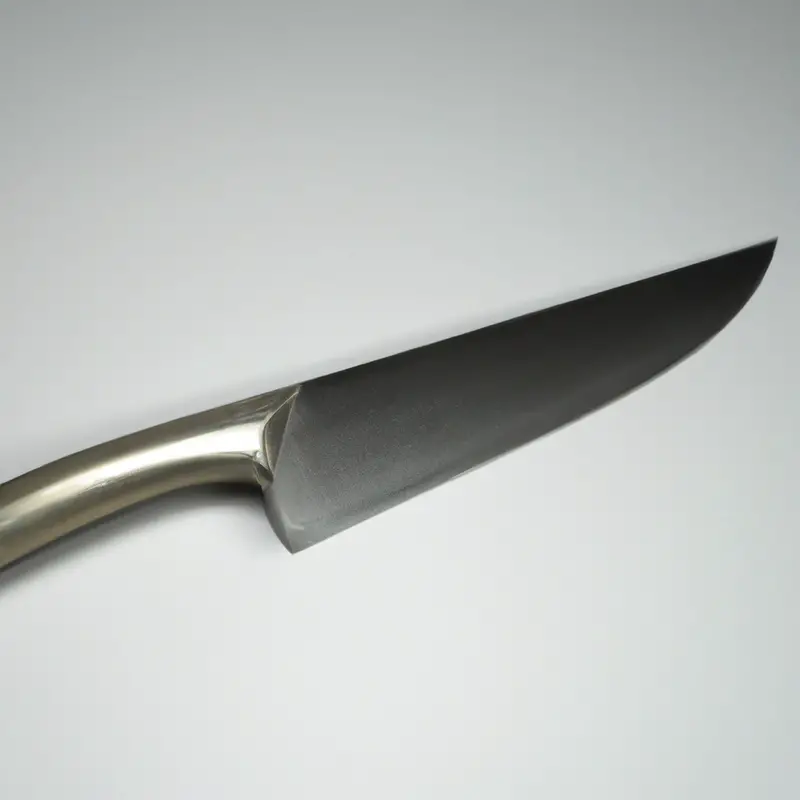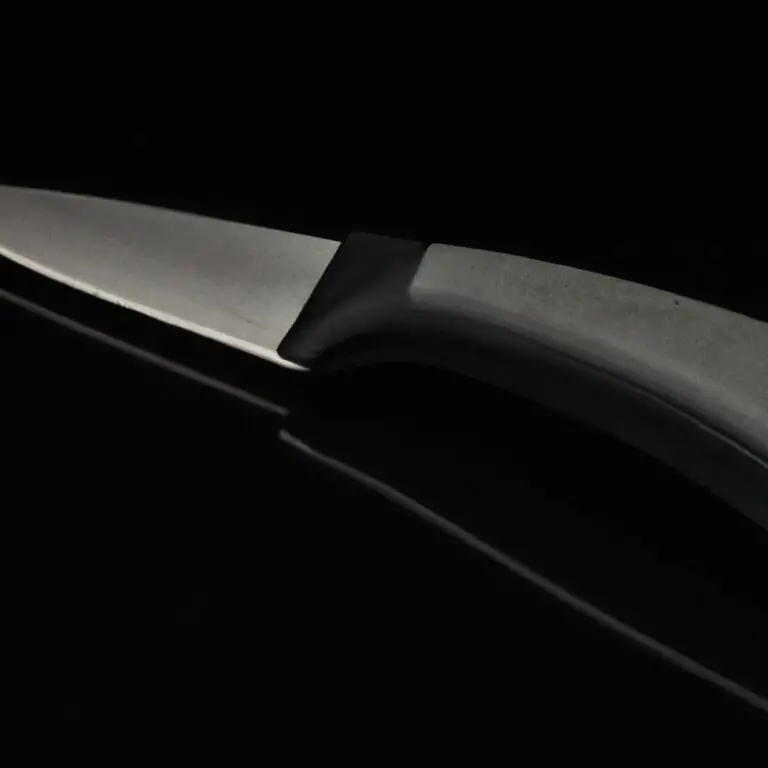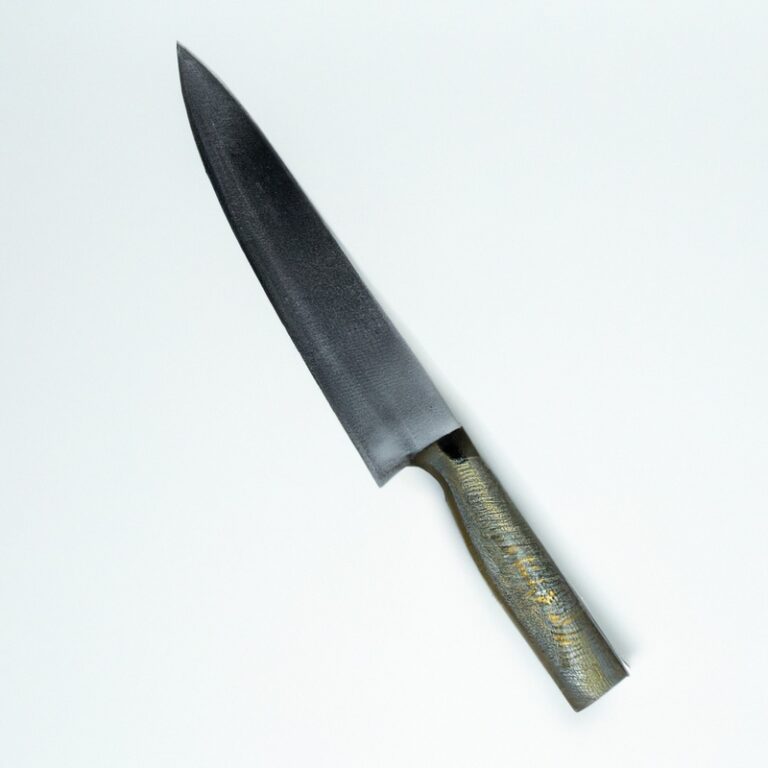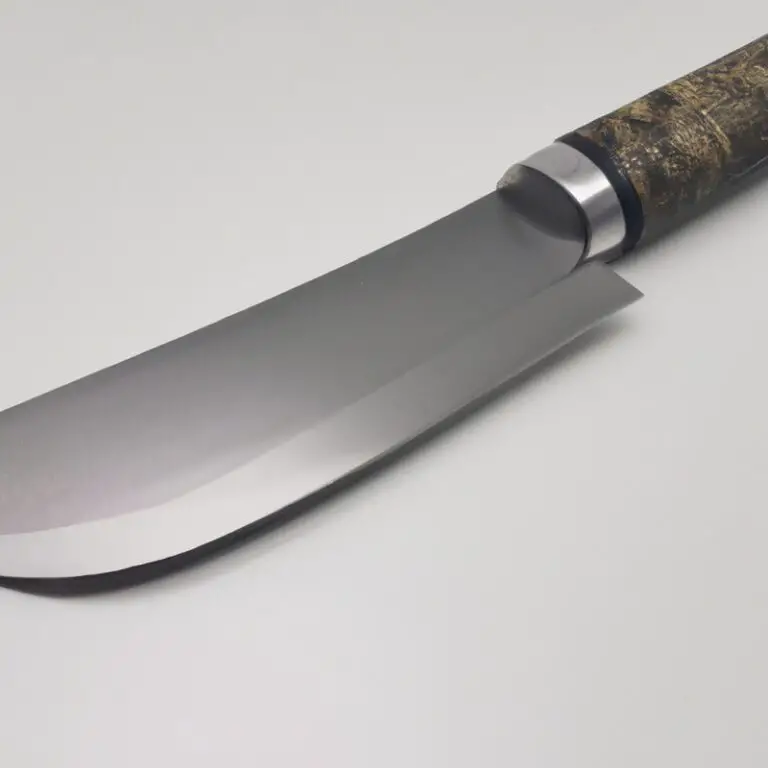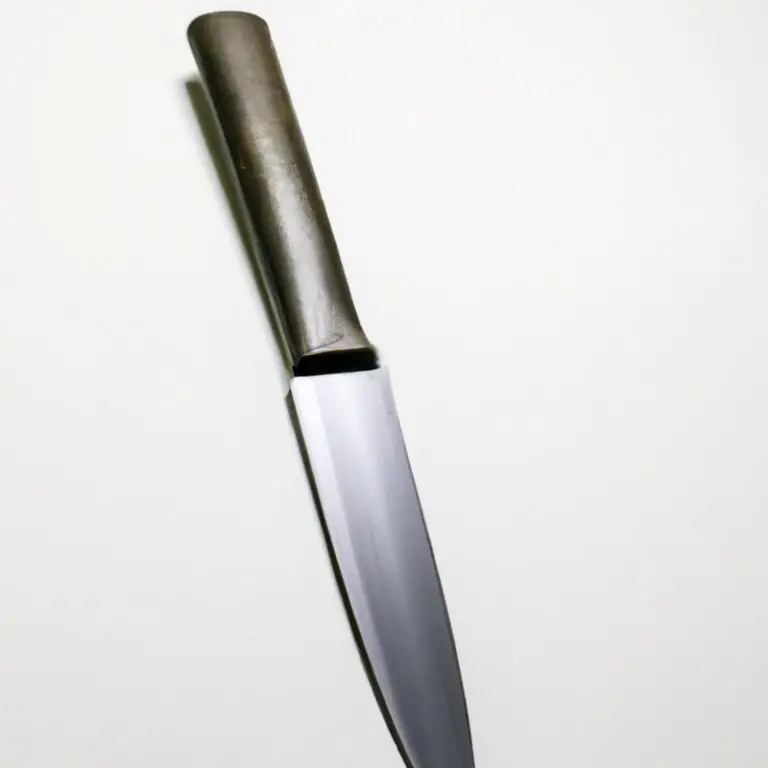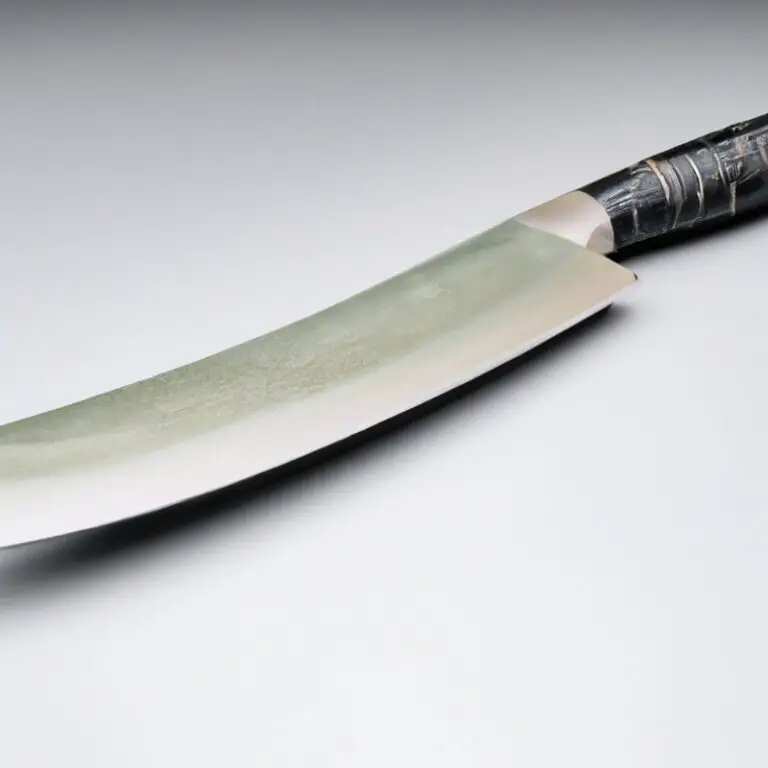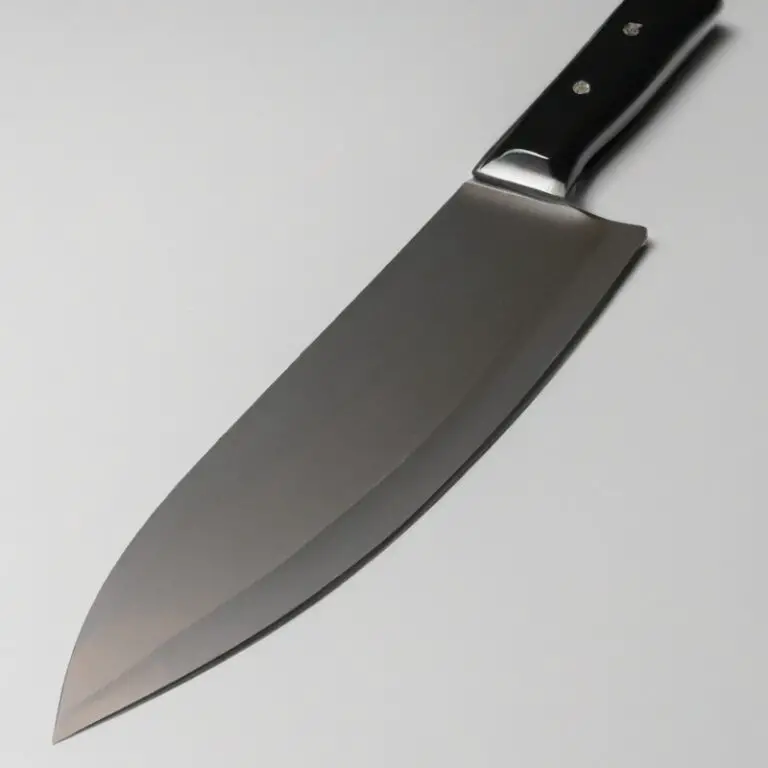What Are The Essential Accessories For a Gyuto Knife? Discover Now!
Key Takeaways:
- A proper sharpening stone or honing rod is essential for maintaining the sharpness of a Gyuto knife.
- A quality knife sheath will protect your knife when not in use, and prevent accidents when carrying it around.
- A cutting board made of a soft and durable material, like wood or polyethylene, will help preserve the edge of your Gyuto knife.
- Investing in a good knife roll or storage case will keep your knife safe and organized, and make it easy to transport to different locations.
If you’re a home chef or a professional cook, owning a Gyuto knife is a must. This Japanese-style chef’s knife is versatile, sharp, and perfect for slicing, dicing, and chopping.
But owning a great Gyuto knife is not enough.
To make the most out of it, you need to have the right accessories that help you maintain its sharpness and protect it from damage. From sharpening stones to knife sheaths and magnetic knife strips, this article will guide you through the essential accessories that every Gyuto knife lover needs in their kitchen arsenal.
| Accessory | Description |
|---|---|
| Sharpening stone | A tool used to sharpen the blade of the Gyuto knife. |
| Cutting board | A surface where the Gyuto knife can be used without dulling or damaging the blade. |
| Honing steel | An essential tool to maintain the edge of the Gyuto knife blade. |
| Chef’s knife roll | Convenient transportation for the Gyuto knife in a safe and organized manner. |
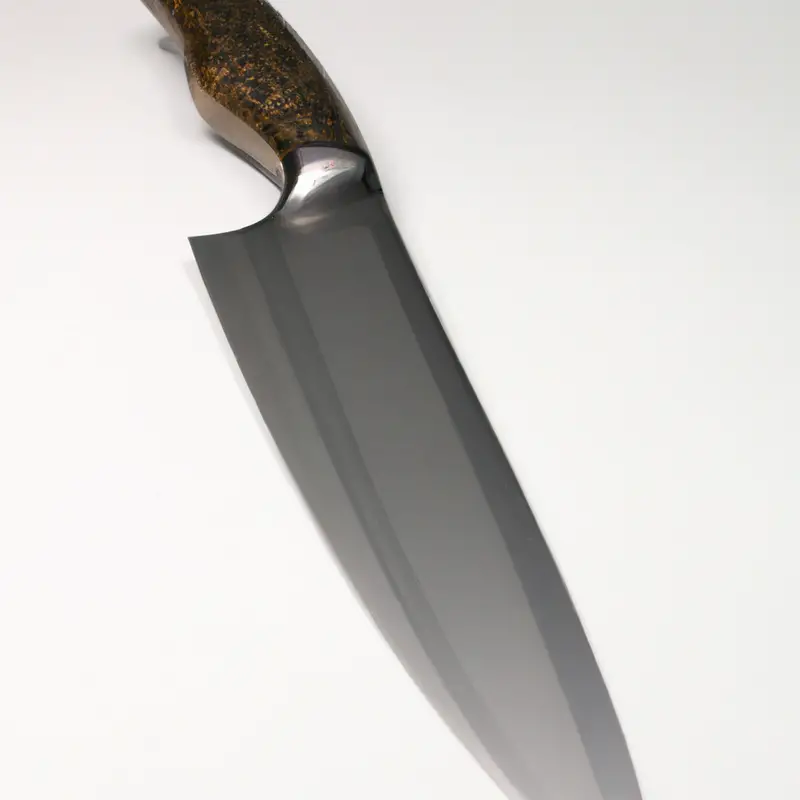
Materials: A Close Look at What Makes a Great Gyuto Knife
A great Gyuto knife is made of high-quality materials that can withstand the pressure and hardness of frequent cutting and slicing. The most common materials used in the creation of Japanese Gyuto knives are high-carbon stainless steel, VG-10 steel, and Aogami or Blue Paper steel.
High-carbon stainless steel is a popular choice because it is sturdy and highly resistant to rust and corrosion.
It also maintains a sharp edge for a long time and requires less effort to sharpen. VG-10 steel is known for its high tensile strength, which makes it ideal for creating sharp and durable blades.
It is also highly resistant to rust and stains, which means it maintains its appearance even after years of use.
Blue Paper steel is another quality material that has excellent hardness and wear resistance. This type of steel is also highly sharpenable and can maintain a sharp edge for extended periods.
The handle material is also an important consideration when choosing a Gyuto knife.
Handles made of high-quality woods, such as ebony or rosewood, provide a comfortable grip and enhance the knife’s visual appeal. Some manufacturers also use synthetic materials like G10 or Micarta, which offer excellent grip even when wet.
When shopping for a Gyuto knife, it is essential to look for a high-quality blade and handle material that suits your needs and preferences.
Investing in a great Gyuto knife made of high-quality materials can significantly improve your cooking experience.
Sharpening Stones: Why the Right Grit Can Make all the Difference
The right grit sharpening stone can make a massive difference in the effectiveness and durability of your Gyuto knife. The grit number determines the coarseness of the stone.
The higher the number, the finer the surface, and the smoother the blade’s edge.
A low grit is suitable for fixing chips and reshaping dull knives, while higher grit stones are useful for honing and polishing an already sharp blade. Using the right grit sharpening stone can also help to avoid damaging your knife.
Using a stone that’s too coarse can damage the knife’s blade, while using a stone that’s too fine can cause the blade to have a less durable edge.
Complementing sandpaper grits with different stones can be effective, but using a consistent grit level across all your sharpening stones can produce consistent results for your Gyuto knives. Ultimately, the grit number required is subjective, varying with personal preference and the type of tasks your Gyuto knife is utilized for.
Nonetheless, using the appropriate grit sharpening stone is critical in effectively maintaining your knife’s performance.
Cutting Boards: Essential for Protecting your Blade and Maintaining Precision
Cutting boards are an essential accessory for any kitchen, especially when using a high-quality Gyuto knife. A proper cutting board will protect the blade from damage and maintain the precision of the edge.
When choosing a cutting board for your Gyuto knife, it’s best to opt for a material that won’t dull the blade quickly.
Hardwood, bamboo, and plastic cutting boards are popular choices for this reason. However, it’s important to note that plastic boards can harbor bacteria over time, so they may need to be replaced more frequently.
Another consideration to keep in mind is the size of the board.
A large cutting board will provide more space to work with, but it can also be bulky and cumbersome to clean and store. On the other hand, a smaller board may be more convenient but will limit the amount of space for chopping.
Lastly, it’s crucial to keep the cutting board clean and sanitized after each use.
Raw meat, fish, and poultry can harbor harmful bacteria that can cross-contaminate other foods. It’s recommended to use a separate board for these items to avoid any potential health hazards.
Investing in a high-quality cutting board is an essential component to prolonging the longevity of your Gyuto knife and ensuring consistent precision when preparing ingredients.
Honing Rods: The Role of Honing in Keeping Your Gyuto Knife Sharp
Honing rods play a vital role in keeping your Gyuto knife sharp. While sharpening stones are used to remove metal, honing rods correct the edge’s alignment and help keep it sharp for longer.
Honing rods are made of different materials, including ceramic, steel, and diamond.
They come in different sizes and shapes, but the basic technique of using them remains the same. To use a honing rod, place it on a non-slip surface and hold the blade at a 20-degree angle to the rod.
Pull the blade towards you, starting from the base to the tip, and repeat on the other side.
Repeat the process four to five times on each side, and your knife will be sharp again. Honing should be done regularly, preferably after each use, to keep your Gyuto knife in excellent condition.
Knife Sheaths: Storing and Transporting Your Knife Safely
To store and transport your gyuto knife safely, a knife sheath is a must-have accessory. These sheaths come in a variety of materials, including plastic, leather, and even bamboo.
They are designed to fit your specific knife, keeping it secure and preventing it from getting damaged.
When storing your knife at home, a sheath is a great way to keep it safe and organized. It also helps protect anyone who may accidentally come into contact with the blade.
When transporting your knife, whether for a picnic or for work, a sheath will protect the blade from damage and prevent any accidental cuts.
It’s important to remember that not all knife sheaths are created equal. Look for options with strong and durable materials that will ensure your knife is protected during storage and transportation.
Additionally, some sheaths allow for easy attachment to backpacks or belts, making them a convenient option for those on the go.
Investing in a high-quality knife sheath is an essential step in protecting your gyuto knife and keeping it in top condition for all your culinary needs.
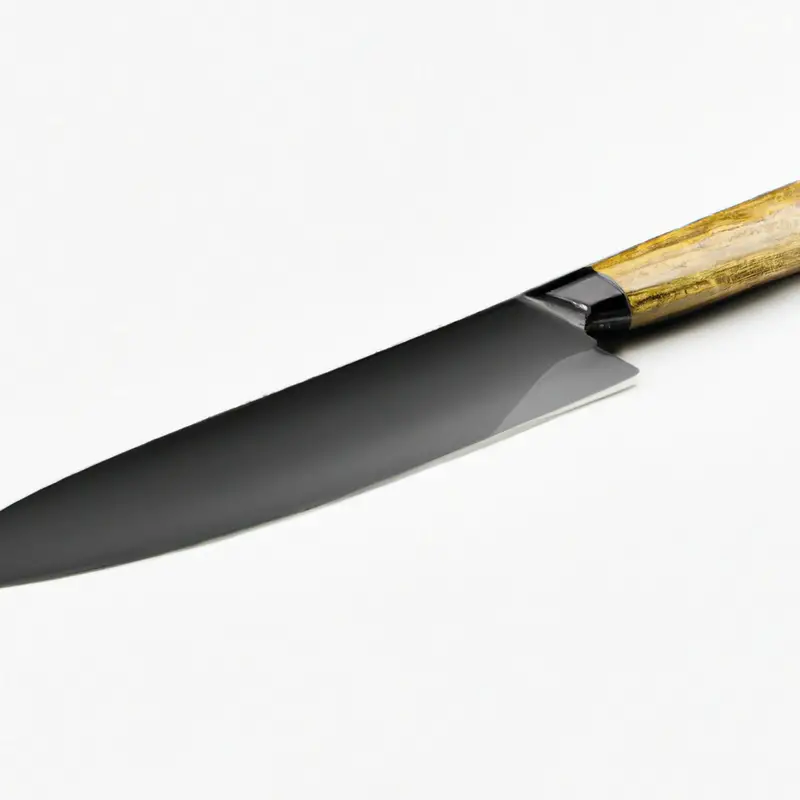
Knife Bags and Rolls: The Optimum Way to Transport your Gyuto and Accessories
Knife bags and rolls are specifically designed for the safe transportation and storage of knives and accessories. These bags and rolls offer various compartments where you can store multiple knives and tools, protecting them from damage and blunting.
The bags are available in different sizes and materials, ranging from leather to nylon.
Choosing a knife bag or roll made of durable and sturdy material ensures the safety of your knives. Also, knife bags and rolls are essential for chefs who are always on the go, especially those who often cater outside the kitchen.
The bags and rolls are easy to carry, and you can easily sling them over your shoulder or tuck them into your backpack.
Furthermore, investing in a knife bag or roll that comes with additional storage sections is a smart move. You can store your sharpening stones, honing rods, and cutting boards in these compartments, ensuring that you have everything you need to maintain your knives’ sharpness and precision, even when you’re not in the kitchen.
Knife bags and rolls are the optimum way to transport your Gyuto and accessories as they keep everything organized, safe, and easily accessible.
Whetstones: Professional-Grade Sharpness for Your Gyuto Knife
To keep your Gyuto knife sharp and in top condition, you need a professional-grade whetstone. A whetstone is a specialized sharpening tool with a rough surface that grinds and hones the edge of your blade, ensuring a sharp and precise cut.
Using a whetstone regularly is crucial to maintain the sharpness of your knife and increase its lifespan.
When looking for a whetstone, consider the grit level. The grit level determines how coarse or smooth the whetstone’s surface is.
A lower grit level (1000-3000) is best for sharpening dull or damaged blades, while a higher grit level (4000-8000) is ideal for polishing and refining the edge.
Ideally, you should have both a coarse and fine grit stone for optimal results. Using a whetstone can be intimidating, but it is not difficult.
Start by soaking the stone for several minutes in water.
Then, place it on a non-slip surface and gently run your knife’s edge along the stone, maintaining a consistent angle. Repeat on both sides of the blade, alternating between the coarse and fine grit stones until desired sharpness is achieved.
When it comes to whetstones, quality matters.
Invest in a high-quality whetstone to keep your Gyuto knife’s edge razor-sharp. With proper care and practice, using a whetstone can be an easy and enjoyable way to take your cooking to the next level.
Protective Gloves: Safe Ways to Protect Your Knuckles while Chopping
Protective gloves are a vital accessory for anyone who frequently chops ingredients with a Gyuto knife. They provide a protective layer for your fingers and knuckles, preventing injuries and accidents in the kitchen.
When looking for protective gloves, look for durable materials with a non-slip grip that will prevent the knife from slipping out of your hand.
It’s crucial to choose a glove with a secure fit as a loose glove may hinder your movements. Wearing protective gloves while chopping ensures safety and reduces the risk of injury, making them an essential accessory to add to your collection.
Knife Blocks: The Perfect Storage Solution for Your Gyuto and Accessories
Knife blocks are an excellent storage option for your Gyuto knife and its accessories. These blocks usually come with several slots designed for varied knife sizes and shapes, including slots for honing rods, shears, and other utensils.
With knife blocks, you can keep your Gyuto knife and other accessories organized while they are within your easy reach.
Furthermore, knife blocks can be made of different materials such as wood, bamboo, or plastic, offering varying styles and designs to accommodate personal preferences. It is essential to select a knife block that fits your Gyuto knife and check its durability, storage capacity, and features before purchase.
Knife blocks are hygienic and keep your knives safe from damage, ensuring they remain sharp and in good condition for everyday use.
Therefore, if you want to preserve your Gyuto knife and other accessories while keeping them organized and easily accessible, a knife block is an excellent storage solution to consider.
Magnetic Knife Strips: Convenient, Space-Saving Storage Solution for Your Gyuto Knife
Magnetic knife strips are a popular and convenient storage solution for your Gyuto knife. These strips eliminate the need for bulky knife blocks, freeing up counter space in your kitchen.
They are easy to install and provide quick access to your knives whenever you need them.
The magnetic strips grip the knives firmly, ensuring they stay securely in place. Moreover, these strips keep your knives visible, allowing you to easily spot the one you need while cooking.
Overall, magnetic knife strips are an excellent space-saving storage solution for your Gyuto knife.
Final Verdict
Owning a quality Gyuto knife is just the beginning of a great cooking experience. To maintain its sharpness and prolong its life, investing in essential accessories such as sharpening stones, cutting boards, honing rods, knife sheaths, protective gloves, among others, is crucial.
The right tools and accessories not only protect your blade but also make it easier to use.
By using professional-grade materials and following best practices for knife handling, you can elevate your cooking skills and enjoy your Gyuto knife for years to come. Trust in the information and advice presented here, and take action to acquire the accessories that suit your needs and preferences.
Being equipped with the best instruments will undoubtedly make you a more confident and skilled home cook, and bring pleasure to the process of preparing meals.

